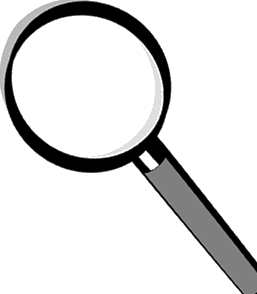




 1.1 Understanding Facts and Details
1.1 Understanding Facts and Details
 FOCUS
FOCUS
阅读下面的文章并回答问题:

题中问到了文中的一个细节(detail):one way in which mentors help protégés。正确答案是teaching them important aspects of the job, 因为第一段中有一个关键点:Mentors are given credit for teaching protégés the key elements of the job。
现在回答下面的问题:

题中问到了文章的一个事实(fact)。一个以why提问的问题,其答案显然是一个原因。这道题的正确答案既是一个原因,又是一个事实:Most people chosen as protégés are already highly motivated and skilled。哪些关键词为你提供了答案线索呢?
 STUDY
STUDY
1. Facts and Details
事实(fact)就是真实发生的事件或现象——正在发生或已经发生的。事实材料就是文章中提到的真实而正确的信息。有时一个事实在文中就是一个支撑细节。
细节(detail)是一些比较具体的信息,比如一个事例、一个原因、一个统计数字、一段描写或者一幅插图。在英语写作中,事实和细节都被用来支持文章的论点或主旨。事实和细节是可以使文章的主要观点更加明确、更有说服力的有力论据。
托福考试中的事实和细节题考查考生回答与文中直接提到的信息有关的问题的能力。事实题和细节题题型大致如下:

2. Useful Skills
帮助考生回答事实题的三种技巧是:略读、浏览和滚动浏览。
略读(skimming)即通过迅速阅读文章来了解文章大意。略读需要查看那些可以从中获悉文章大意和整体结构的关键句。略读时,视线要快速扫过全文,不要逐字阅读。
浏览(scanning)即通读文章寻找特定信息。文章的问题通常会告诉考生需要浏览哪类信息,例如原因、例子、事情起因、作用或者特点。浏览就是寻找那些可以帮助考生回答问题的事实和细节。
滚动浏览(scrolling)就是利用电脑的滚动条在屏幕上迅速拉动文章。当文章太长、无法同时看到全文的时候,考生必须要通过滚动文章来浏览全文。无论是略读文章纵览全文,还是浏览段落寻找细节,滚动浏览都是一项非常重要的辅助技能。
3. Transitions
特定的表达方式是重要的线索,可以帮助考生理解语句间及段落间各观点之间的关系。这些单词和短语叫做过渡词(transitions)。

4. Answer Choices
在事实题和细节题中,正确选项可能是对文章信息的同义转述。同义转述(paraphrase)就是用不同的单词重新表述同一意思。
错误的选项可能错在:
 重复文章中的信息但并没有回答问题;
重复文章中的信息但并没有回答问题;
 错误表述文章中的信息或观点;
错误表述文章中的信息或观点;
 对原文的表述不精确或不正确;
对原文的表述不精确或不正确;
 与文章无关或在文中没有被提到。
与文章无关或在文中没有被提到。
5. Sample Questions

题目要求考生确认文章中的一个事实。关键词组sedimentary rocks可以帮助考生在浏览文章的过程中迅速找到所需信息。正确答案是They constitute most of the Colorado Plateau。文章首段引出了科罗拉多高原(the Colorado Plateau)的主题,并且提出Most of the rocks are sedimentary rocks,这一陈述和正确答案表义一致。
为什么其他三个选项不正确呢?They were formed by forces within the earth重复了文中的信息,但没有描述沉积岩(sedimentary rocks)。They are found in the world’s great deserts和They are the oldest types of rocks on the earth在文章中并没有提及,因此考生不能判断它们是否正确。

题目问到了一个有关Navajo sandstone(沙丘砂岩)的细节。如果考生浏览段落,就会发现Navajo sandstone在哪里被提到过。有时计算机系统对文章会有所标示,以帮助考生提高浏览文章的速度。如果考生看了前面的句子,就会看到Navajo sandstone是举例说明a rock layer that is of uniform composition,…named for both the sediments that formed it and the location where it was discovered,因此正确答案是a rock layer of uniform composition。
为什么其他三个选项不正确呢?A sand dune next to a steep cliff不准确是因为作者并没提到Navajo sandstone紧挨着a steep cliff(陡峭悬崖)。文章中并没提到a relatively soft sedimentary rock;而a formation of several types of rocks不正确,是因为它所描述的岩石层并非由单一成分构成。
 PRACTICE
PRACTICE
Read the passages and choose the best answer to each question.
QUESTIONS 1–3
1 The cells of a plant are organized into three tissue systems: dermal, vascular, and ground tissue. Each tissue system is continuous throughout the plant’s body. The specific characteristics of each tissue, however, are different in the different organs of the plant.
2 The dermal tissue system is the “skin” of the plant. The dermal system, or epidermis,is a single layer of cells covering the entire body of the plant. The main function of the epidermis is to protect the plant. The epidermis also has specialized characteristics for the particular organs it covers. For example, the epidermis of leaves and stems has a waxy coating that helps the plant conserve water, and the epidermal cells near the tips of the plant’s roots help the plant absorb water and nutrients from the soil.
3 The second tissue system—the vascular system—is the transportation system for water and nutrients. Vascular tissue also helps to support the plant’s structure. The third system—the ground tissue—makes up the bulk of a plant, filling all of the spaces between the dermal and vascular tissue systems. Ground tissue functions in photosynthesis, storage,and support.
1. How are the three tissue systems of a plant similar to each other?
A They all continue throughout the plant’s body.
B They all have a protective waxy coating.
C They all consist of a single layer of cells.
D They all perform the same bodily functions.
2. Which of the following statements best describes the plant’s epidermis?
A It helps the plant to stand upright.
B It transports water and nutrients.
C It covers the plant’s entire body.
D It is found only in young plants.
3. Which type of tissue does a plant’s body mainly consist of?
A Dermal
B Vascular
C Epidermis
D Ground
QUESTIONS 4–6
1 By the decades just before the Civil War of the 1860s, the Southern states had developed an economic culture distinct from that of the North. The economy of the South depended largely on two things: cotton and slave labor. Because of the rising demand for cotton from the mills of England, and the invention of the cotton gin in 1793, the cotton production of the South increased tremendously. In 1790, cotton output had been 9,000 bales a year, but by the 1850s, output had soared to five million bales.In the South, cotton was “king.” The most readily available source of labor was the institution of slavery. Thus, cotton and slavery became interdependent, and the South grew more reliant on both.
2 This was in sharp contrast to the North, where farming was becoming more mechanized and diversified. Northern farmers would boast of improvements in the form of new roads, railways, and machinery, and of the production of a variety of crops. In the South, however, farmers bought laborers instead of equipment, and a man’s social status depended on the number of slaves he owned. The economic differences between the two regions would ultimately lead to armed conflict and the social restructuring of the South.
4. Why did the Southern output of cotton greatly increase between 1790 and 1850?
A Southern farmers invested in transportation.
B Mills in England demanded more cotton.
C The South was trying to dominate the North.
D Southern cotton was superior to Northern cotton.
5. What was associated more with the North in the period discussed?
A Farm machinery
B Slave labor
C Military service
D Reliance on one crop
6. The author argues that the Civil War between the North and the South
A was a conflict over control of the cotton trade
B began in 1790 and lasted almost seventy years
C was largely the result of economic differences
D forced the South to produce different crops
QUESTIONS 7–10
1 Play is common to the young of most mammals. Some birds play, but it is rare in cold–blooded animals such as fish and reptiles. Why some animals play ,and others do not, is not entirely understood, but the most playful—such as dolphins and monkeys—are also the most intelligent and sociable. Play may seem something of a puzzle. Not only is it apparently unproductive, but it also places the participant at risk of being surprised by predators. However, there must be a good reason for play. The most widely held scientific explanation is that play allows the social behaviors of the species to be explored and learned. Other benefits include physical exercise and the learning of survival skills such as hunting. A kitten that grows up separated from other kittens becomes both a social misfit and a poor hunter, largely because it is deprived of play.
2 Kittens start playing when they are about three weeks old. Early play consists of mock attacks with the mother and littermates, clearly previewing the territorial behavior of adult life. As the kittens grow older, more elaborate play patterns develop. At four weeks they can wrestle. The sideways leap and the pounce may be learned by the fifth week. By six weeks they can chase and leap on each other with reasonable accuracy. Kittens stalk,chase, and fall over each other. They recognize these patterns as being playful, even though the same signals in adult life may have a more serious meaning.
7. The author makes the point that the most playful animals are
A cold–blooded animals
B highly intelligent and sociable
C easily surprised by predators
D not a subject of scientific study
8. The author mentions dolphins and monkeys as examples of
A rare species
B fish and reptiles
C playful animals
D predators
9. According to paragraph 1, a kitten that has no contact with other kittens will
A have to play with toys
B be afraid of people
C exercise more than other kittens
D not learn social and hunting skills
10. According to paragraph 2, which of the following statements is true?
A The mock attacks of young kittens disappear by the age of six weeks.
B Actions that are playful in kittens convey a different meaning in adult cats.
C Territorial behavior in kittens is a sign of developmental problems.
D Kittens and human children share many of the same play patterns.
Read the passages and choose the best answer to each question.
QUESTIONS 1–3
1 Erik Erikson believed that personality development is a series of turning points, which he described in terms of the tension between desirable qualities and dangers. He emphasized that only when the positive qualities outweigh the dangers does healthy psychosocial development take place.
2 An important turning point occurs around age six. A child entering school is at a point in development when behavior is dominated by intellectual curiosity and performance. He or she now learns to win recognition by producing things. The child develops a sense of industry. The danger at this stage is that the child may experience feelings of inadequacy or inferiority. If the child is encouraged to make and do things, allowed to finish tasks, and praised for trying, a sense of industry is the result. On the other hand, if the child’s efforts are unsuccessful, or if they are criticized or treated as bothersome, a sense of inferiority is the result. For these reasons, Erikson called the period from age six to eleven Industry vs. Inferiority.
1. According to Erikson’s theory, what desirable quality should develop in a child who is six to eleven years old?
A A liking for school
B A feeling of inadequacy
C An ability to finish tasks
D A sense of industry
2. According to Erikson’s theory, what will happen if a child’s efforts are criticized?
A The child will dislike his teacher.
B The child will avoid other children.
C The child will try harder to win recognition.
D The child will feel inferior.
3. Industry vs. Inferiority is an example of
A the tension between a positive quality and a danger
B a personality disorder in children
C the difference between a child of six and a child of eleven
D an educational strategy
QUESTIONS 4–6
1 In the storytelling traditions of West Africa, the tiny rabbit appears frequently as a rascal who teases or plays jokes on bigger animals. In one story, Mr. Rabbit tricks Mr.Elephant and Mrs. Whale into a tug of war with each other. Such tales about Mr. Rabbit continue to be part of the oral traditions of the Wollof people of Senegal.
2 The African–American folktales of the U.S. South also feature a trickster rabbit in the character of Brer Rabbit. In his American incarnation, Brer Rabbit uses his wits to overcome circumstances and even to enact playful revenge on his larger, stronger adversaries, Brer Fox, Brer Wolf, and Brer Bear. Although he is not always successful, Brer Rabbit’s efforts make him both a folk hero and a friendly comic figure. Joel Chandler Harris,a journalist in Georgia, had heard old men tell Brer Rabbit tales by the fireside when he was a young boy. Harris wrote down and published many of the stories, popularizing them for the general public.
3 A folklorist named Alcée Fortier recorded very similar versions of the same stories in southern Louisiana, where the rabbit character was known as Compair Lapin in Creole French. More recently, the rabbit has enjoyed another incarnation as the cartoon character Bugs Bunny—a rascally rabbit who causes trouble, tricks the hunter, and always gets the final word.
4. What trait belongs to the rabbit character in tales of West African origin?
A Storytelling ability
B Very keen eyesight
C Ability to fool others
D Strong, athletic body
5. How did a wide audience of people know about the Brer Rabbit stories?
A They studied the oral traditions of West Africa.
B They heard old men tell the stories by the fireside.
C They read the stories published by a journalist.
D They listened to recordings from southern Louisiana.
6. What do Brer Rabbit, Compair Lapin, and Bugs Bunny have in common?
A All are cartoon characters.
B All play tricks on others.
C All save others from trouble.
D All speak Creole French.
QUESTIONS 7–10
1 A hot spot is a giant underground caldron of molten rock in one of the world’s many volcanically active areas. The steamy geysers, thermal pools, and mud pots of Yellowstone National Park owe their origins to hot spots.
2 Annually, more than 200 geysers erupt in Yellowstone, making this one of the most interesting places in the world for geologists. Over 100 geysers lie within the Upper Geyser Basin, a one–square–mile area near Old Faithful, the most famous geyser in the world. The Yellowstone hot spot was created around ten million years ago, and the center of the park is still volcanically active, with molten rock only a mile or two beneath the Earth’s surface.
3 When rain and melted snow seep down through tiny cracks in the Earth, the water eventually reaches underground chambers of lava–heated rock. The rock heats the water,and the boiling water and steam often make their way back up to the surface in the form of a geyser, a thermal pool, or a mud pot.
4 In a geyser, water trapped in an underground chamber heats up beyond the boiling point and forms steam. Since steam takes up 1,500 times more space than water, pressure builds up, eventually forcing the superheated water to burst to the surface as a geyser. A thermal pool is formed when the water from the hot spot reaches the surface before cooling off. If the water does not make it all the way to the surface, steam and gases may dissolve rocks and form a bubbling mud pot instead.
7. Where do hot spots occur?
A In rocky regions near the equator
B Below the ground near active volcanoes
C About a mile above a volcano’s crater
D In the center of ancient volcanoes
8. According to the passage, why is Yellowstone National Park an interesting place for geologists?
A There are 100 square miles of hot spots.
B Over 200 geysers erupt there each year.
C There are more than 100 different kinds of geysers.
D More than 200 types of rock are found there.
9. How do hot spots contribute to the formation of geysers?
A Hot spots melt all of the snow falling into a volcano’s crater.
B Water is trapped in an underground chamber and cannot escape.
C Hot rocks create boiling water, steam, and pressure underground.
D Water from hot spots rises to the surface before it cools off.
10. When do mud pots form?
A When steam and gases dissolve rocks near the surface
B When underground water exceeds the boiling point
C When snow melts in Yellowstone’s geyser basins
D When superheated water bursts to the surface
Read the passages and choose the best answer to each question.
QUESTIONS 1–3
1 Most matter exists as compounds—combinations of atoms or oppositely charged ions of two or more different elements held together in fixed proportions by chemical bonds. Compounds are classified as organic or inorganic. Organic compounds contain atoms of the element carbon, usually combined with itself and with atoms of one or more other elements such as hydrogen, oxygen, nitrogen, sulfur, phosphorus, and chlorine. Many materials important to us—food, vitamins, blood, skin, cotton, wool, paper, oil, plastics—are organic compounds.
2 Larger and more complex organic compounds, called polymers, consist of a number of basic structural units linked together by chemical bonds. Important organic polymers include carbohydrates, proteins, and nucleic acids. Carbohydrates, such as the complex starches in rice and potato plants, are composed of a number of simple sugar molecules.Proteins are produced in plant and animal cells by the linking of different numbers and sequences of about twenty different structural units known as amino acids. Most animals, including humans, can manufacture about ten of these amino acids in their cells,but the other ten, called essential amino acids, must be obtained from food in order to prevent protein deficiency. Nucleic acids are composed of hundreds to thousands of four different units called nucleotides linked together in different numbers and sequences.DNA and RNA in plant and animal cells are nucleic acids.
1. Which of the following statements applies to all organic compounds?
A They are composed of carbon and one or more other elements.
B They contain atoms of the seven most abundant elements.
C They have stronger chemical bonds than inorganic compounds do.
D They are produced by linking several simple sugar molecules.
2. Carbohydrates, proteins, and nucleic acids are types of
A elements
B inorganic compounds
C polymers
D amino acids
3. Why is it important for humans to obtain some amino acids from food?
A Without certain amino acids, humans store too much fat.
B Organically grown food is the only source of amino acids.
C Sufficient amino acids are necessary for DNA production.
D Humans cells cannot make the ten essential amino acids.
QUESTIONS 4–6
1 By the 1840s, British North America had developed a vibrant commercial economy based on its abundant natural resources and a growing international trade. Fish, furs, timber, and grains represented over 90 percent of all economic activity. The oldest of the resource commodities, fish, was traditionally associated with Newfoundland and continued to dominate that colony’s economy throughout the nineteenth century. The other traditional resource, fur, had a much smaller economic value compared to other resources. However, the fur trade was of tremendous value politically because it provided the means for Great Britain to retain its claim over much of Canada, and also formed the basis of the relationship between the British and the aboriginal peoples.
2 Timber and grain eventually replaced fish and fur in economic importance. Every province of British North America except Newfoundland was involved in the timber trade.In New Brunswick, the timber industry controlled every aspect of life, and settlement was closely connected to the opening of new timber territory. In the extensive agricultural lands of the St. Lawrence Valley and Upper Canada, wheat quickly became the dominant crop. Wheat met a growing demand abroad and it transported well as either grain or flour.
4. Which resource was the earliest to contribute to the economy of British North America?
A Timber from New Brunswick
B Fur from across Canada
C Fish from Newfoundland
D Wheat from Upper Canada
5. According to the passage, what is the main reason for the importance of the fur trade?
A Fur had more economic value than any other natural resource.
B Fur formed the basis of the local economy everywhere in Canada.
C The fur trade supplied all of the fur needed in Great Britain.
D The fur trade allowed Great Britain to control a large part of Canada.
6. Which statement best describes the British North American economy around 1840?
A Four important resources supported most of the commercial activity.
B The economy was based mainly on the exportation of timber and wheat.
C Economic activity varied greatly from one province to another.
D Great Britain maintained strict control over all aspects of the economy.
QUESTIONS 7–10
1 The youngest child of a prosperous Midwestern manufacturing family, Dorothy Reed was born in 1874 and educated at home by her grandmother. She graduated from Smith College and in 1896 entered Johns Hopkins Medical School. After receiving her M.D.degree, she worked at Johns Hopkins in the laboratories of two noted medical scientists.Reed’s research in pathology established conclusively that Hodgkin’s disease, until then thought to be a form of tuberculosis, was a distinct disorder characterized by a specific blood cell, which was named the Reed cell after her.
2 In 1906, her marriage to Charles Mendenhall took Reed away from the research laboratory. For ten years, she remained at home as the mother of young children before returning to professional life. She became a lecturer in Home Economics at the University of Wisconsin, where her principal concerns were collecting data about maternal and child health and preparing courses for new mothers.
3 Dorothy Reed Mendenhall’s career interests were reshaped by the requirements of marriage. Her passion for research was redirected to public health rather than laboratory science. Late in life, she concluded that she could not imagine life without her husband and sons, but she hoped for a future when marriage would not have to end a career of laboratory research.
7. What was Dorothy Reed’s area of research at Johns Hopkins?
A Manufacturing
B Pathology
C Tuberculosis
D Maternal health
8. Why did Reed stop working in the research laboratory?
A Marriage required that she remain at home.
B She became more interested in public health.
C Johns Hopkins did not like women doing research.
D Her work on Hodgkin’s disease was completed.
9. What did Dorothy Reed Mendenhall conclude about marriage?
A Marriage inspired her passion for laboratory research.
B It was a mistake for her to give up her career for marriage.
C Marriage need not keep women from careers in laboratory science.
D Women cannot have both a happy marriage and a successful career.
10. Which fact should be included in a biography of Dorothy Reed Mendenhall?
A She was the first woman in her family to earn a degree in medicine.
B Marriage and motherhood prevented her from resuming her career.
C She proved that Hodgkin’s disease was characterized by a certain blood cell.
D Her career was devoted to finding a cure for tuberculosis in children.
Answers to Exercises 1.1.A through 1.1.C are on pages 633–634.
 EXTENSION
EXTENSION
1. 在课外时间多看报纸、杂志或大学课本。选择一篇1~3段的短文,复印一份带到课堂上来。在课上找一名搭档,一起阅读文章并画出重要观点,标出重要的事实、细节和例证。和你的搭档练习互相问答。
2. 在课外时间和你的搭档一起练习,多看杂志或大学课本。选一篇100字左右的文章,就该文章提出两个事实和细节题,无需写答案。具体问题请参照第36页的表格。把文章和问题做成投影,或多复印几张以便班里每位同学都能看到。这样,这堂课就成了完全由学生出题的阅读考试!全班学生可通过书写或者口头讨论的方式回答考试问题。你能否只根据文章中提供的内容回答所有的问题呢?